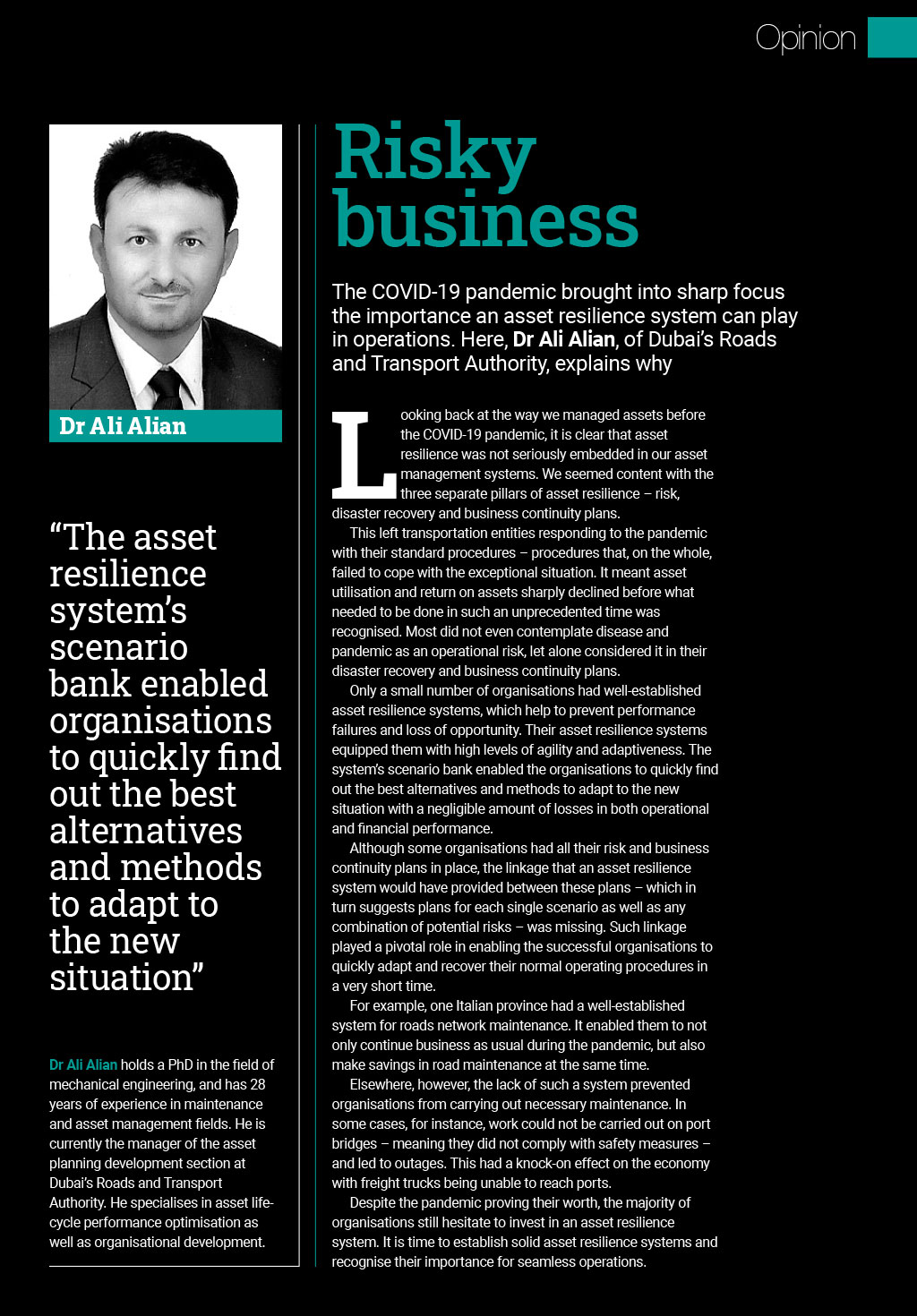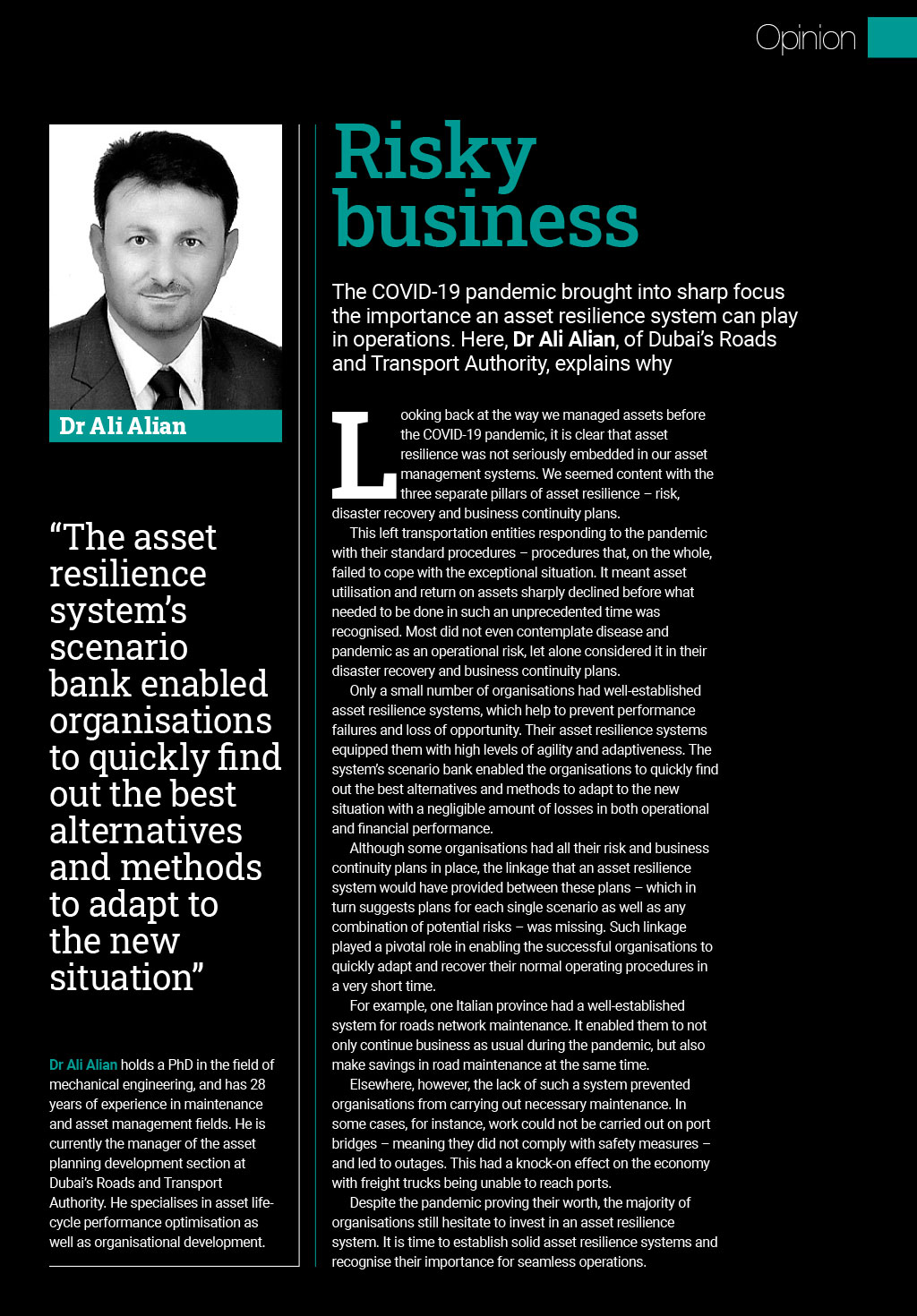


The COVID-19 pandemic brought into sharp focus the importance an asset resilience system can play in operations. Here, Dr Ali Alian, of Dubais Roads and Transport Authority, explains why Dr Ali Alian The asset resilience systems scenario bank enabled organisations to quickly find out the best alternatives and methods to adapt to the new situation Dr Ali Alian holds a PhD in the field of mechanical engineering, and has 28 years of experience in maintenance and asset management fields. He is currently the manager of the asset planning development section at Dubais Roads and Transport Authority. He specialises in asset lifecycle performance optimisation as well as organisational development. L ooking back at the way we managed assets before the COVID-19 pandemic, it is clear that asset resilience was not seriously embedded in our asset management systems. We seemed content with the three separate pillars of asset resilience risk, disaster recovery and business continuity plans. This left transportation entities responding to the pandemic with their standard procedures procedures that, on the whole, failed to cope with the exceptional situation. It meant asset utilisation and return on assets sharply declined before what needed to be done in such an unprecedented time was recognised. Most did not even contemplate disease and pandemic as an operational risk, let alone considered it in their disaster recovery and business continuity plans. Only a small number of organisations had well-established asset resilience systems, which help to prevent performance failures and loss of opportunity. Their asset resilience systems equipped them with high levels of agility and adaptiveness. The systems scenario bank enabled the organisations to quickly find out the best alternatives and methods to adapt to the new situation with a negligible amount of losses in both operational and financial performance. Although some organisations had all their risk and business continuity plans in place, the linkage that an asset resilience system would have provided between these plans which in turn suggests plans for each single scenario as well as any combination of potential risks was missing. Such linkage played a pivotal role in enabling the successful organisations to quickly adapt and recover their normal operating procedures in a very short time. For example, one Italian province had a well-established system for roads network maintenance. It enabled them to not only continue business as usual during the pandemic, but also make savings in road maintenance at the same time. Elsewhere, however, the lack of such a system prevented organisations from carrying out necessary maintenance. In some cases, for instance, work could not be carried out on port bridges meaning they did not comply with safety measures and led to outages. This had a knock-on effect on the economy with freight trucks being unable to reach ports. Despite the pandemic proving their worth, the majority of organisations still hesitate to invest in an asset resilience system. It is time to establish solid asset resilience systems and recognise their importance for seamless operations.